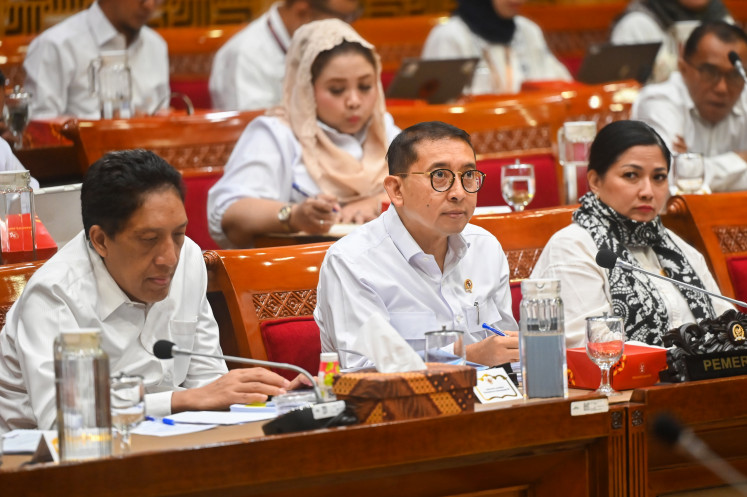Popular Reads
Top Results
Can't find what you're looking for?
View all search resultsPopular Reads
Top Results
Can't find what you're looking for?
View all search resultsFrom illegal logger to tree hugger
Ismanto (JP/Novia D
Change text size
Gift Premium Articles
to Anyone
Ismanto (JP/Novia D. Rulistia)
It takes great determination and courage for people to change their life course in the opposite direction.
A 39-year-old Dayak man, Ismanto, is one of those brave people who has transformed his life from that of an illegal logger into a forest conservationist.
'I decided to stop being an illegal logger because it apparently did not do me any good for the long run,' he said, calmly.
Ismanto is working for the non-profit organization Alam Sehat Lestari (ASRI), in charge of replanting ASRI's reforestation area in Laman Satong, conducting daily checks on the condition of the forest and taking care of the seedling house.
Ismanto became an illegal logger in 1997, following his friends who mostly did the same at that time. He was just a tree-picker in the beginning, but later started to learn to use chainsaws to cut the trees.
'I cut a lot of meranti and bangkirai trees. The wood was then sold to sawmills in nearby areas, like Siduk and Ketapang,' the father-of-two said.
From logging activities, he said that he could earn a monthly income of around Rp 4 million (US$296.73) to Rp 8 million, depending on how frequently he went to the forest and the number of orders he received.
That amount was enough for him and his family, but the risk of being an illegal logger was actually much heavier.
'If you didn't take care when cutting the tree could fall on you, and you could die. Many died because of such incidents,' he said.
'Then I also realized, the money I made was just enough to eat, I couldn't get any richer. It's the sawmill owners who got richer.'
In 2000, he decided to quit logging as he felt he was contributing to the environmental degradation.
'The forest was also threatened with fires, and when there were fires, we really suffered from the haze.'
He joined Yayasan Palung to assist their forest-rehabilitation program, while working on his rubber field nearby.
When ASRI came to Laman Satong village in 2009, he was also interested in participating in its program by first participating in the organization's replanting program together with the other local people.
After a while, he was recruited as ASRI's reforestation team.
'By protecting the forest we can now feel the difference; the air is so fresh and our grandchildren can see it all too in the future,' Ismanto said.
' JP/Novia D. Rulistia











